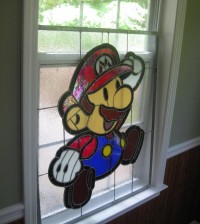2018 Gift Guide: Nostalgia Classic Video Game Consoles

Most gamers have some kind of a relationship with nostalgia, whether it’s lamenting bygone eras of gaming, requesting for developers to return to favorite franchise for one more entry, or ensuring that they always have the availability to play their favorites by rebuying them on many formats. The industry has a pretty strong grasp on that last one, evidenced in how remasters and compilation discs have been released year after year for many popular titles; it’s difficult to keep track of how many times and on how many platforms the original Mario and Sonic games have appeared.
Over the past few years, however, the idea of a compilation has manifested into something a little different: second-party retro consoles began to show up at retailers like Kohl’s and Bed, Bath, and Beyond, touting tons of games for a low price. The problem with those ended up being reliability, as the issues they suffered ranged from audiovisual glitches to outright defects. Capitalizing on that demand and the iffy quality of knockoffs, the companies themselves have started a new and surprisingly effective measure: releasing miniature versions of classic consoles directly from them, with their production standards and guarantees, while preloading them with 20 or so games. The looks and some of the functionality are duplicated, only in a novelty small-scale console because … well, they’re cute, take up little space, and impress your friends.
The success of the first has spurred others to join in on the fun, resulting in options being available on the market, as well as some mild improvement in quality with the not-so-official released products. Below, you’ll find a quick breakdown of what’s been released thus far and what’s worth the pursuits over the holiday season, with a strong emphasis placed on Nintendo’s first two minis, both of which are — currently – now easy to obtain after absurd demand forced them into being hard-to-find commodities in their given release years.
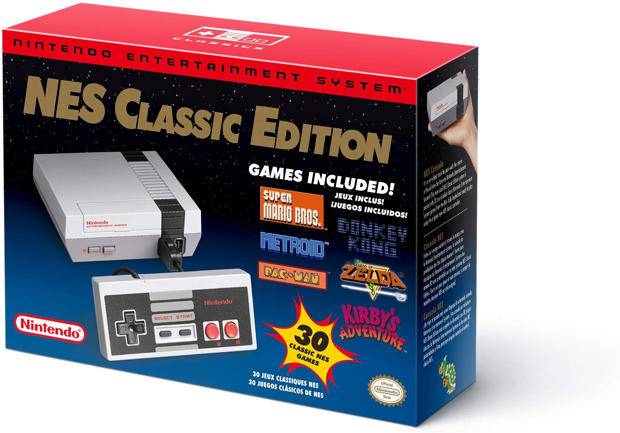
Nintendo Entertainment System: NES Classic Edition
Number of Games: 30 | Scarcity: Available, But In and Out | MSRP: $59
The one that started it all. The popularity of the NES Mini ventured beyond the gaming community and into the mainstream, with tales of 10 or less consoles being made available at retailers and secondary-market hoarders snatching ‘em all up. Prices skyrocketed, adults were stressed out, and kids were unhappy once the holidays rolled around; it was a mess. While it took some time, Nintendo has produced enough of these so that the console can now be more effortlessly found at your local gaming store or retailer.
Part of the demand hinged on a simple fact: Nintendo made the NES Mini extremely well. While they’ve duplicated the system to such a degree that it looks like Rick Moranis merely zapped it with the device from Honey, I Shrunk the Kids, connecting the system is far more effortless than one might remember of the vintage system. An HDMI port sends the audiovisual signals straight to the TV or A/V receiver, and a USB charging apparatus allows the system to either be plugged into a wall through an adapter or, if space is tight and jacks are in short supply, to hook it up through one of the USB ports on a TV, disc player, or cable box. Even the wide front jacks for the controllers are in the right spots, though the cords for the controllers are much shorter than many people would like. There’s a benefit to not being able to buy these things at release, though, as extension cables ($11 at Amazon; click here) and wireless third-party controllers are now available to rectify this issue.
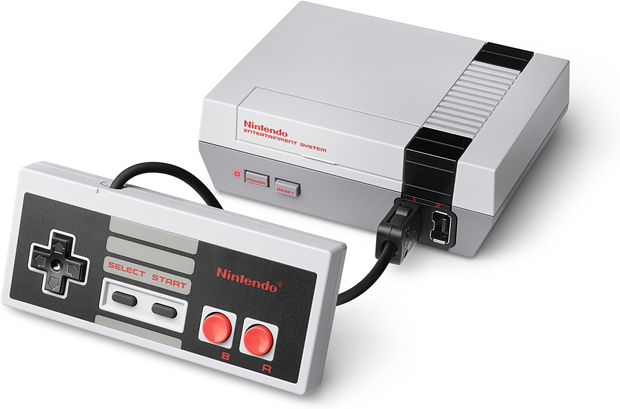
Thirty (30) games show up on the NES Classic Edition, and it’s about what you’d expect, in a good way. Along with all three of the original Super Mario titles being made available – as well as the real OG not-so-super Mario Bros. — they’ve included tried-and-true classics that many would consider “necessities”, from pairs of Castlevania and Legend of Zelda games to Punch-Out and Excitebike. To be honest, the entire roster gets so much right in both variety and comprehensiveness that it’s difficult to really tie them all into a paragraph: Double Dragon II and Ninja Gaiden are there for the brawlers, Dr. Mario shows up for a puzzle break, and it wouldn’t be an 8-bit retro system without arcade classics Pac-Man and Galaga. If there’s a glaring omission, it’d probably be Tetris … but, really, the prevalence of mobile versions of that game makes that a non-issue. No gun, no Duck Hunt.
In terms of options, the NES Classic comes equipped with an array of display modes. These either give the graphics their flatter, smoother CRT television appearance, or they show up in crisp pixel-by-pixel perfection just as the designers wanted them to be seen. Each game also comes with four Suspend Point save slots, so if something calls the player away, their progress can be saved and returned to at a later late. Pretty mind-boggling, huh? Something else interesting: the included wired controllers can be plugged into older Nintendo systems – the Wii and the WII U – for play with downloaded titles for that retro feel. In short, the folks at Nintendo pretty much thought of everything with their first foray into tiny retro console duplication.
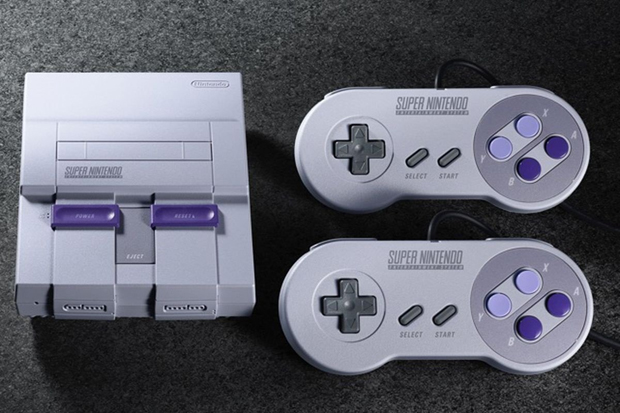
Super Nintendo Entertainment System: Super NES Classic
Number of Games: 20 + 1 | Scarcity: Readily Available, Order or In-Store | MSRP: $79
“Oh no, not again” was a common and, frankly, apt response to the announcement of the Super NES Classic Edition. Would this be another instance of demand greatly outweighing supply? Turns out, yup, it was once again a mad scramble to find the second iteration of Nintendo’s shrunken classic consoles. Pre-ordering was another hassle and retailers quickly ran out, yielding yet another situation where Nintendo underestimated demand. Despite being $20 more and containing only 20 games (instead of 30), the whole secondary-market situation once again ran amuck. Luckily, as with its NES mini predecessor, it too can now be easily obtained in most retail locations … though, now that the dust has settled from all the hype, it’s clear that the value isn’t quite a strong with this one.
Similarly to the NES Classic, the Super Nintendo Classic Edition is exceptionally well-built, sporting the details of the console’s appearance all the way to fine points; even the purple switches toggle the system on and off. The layout for the controller jacks is different, though, and probably should be expected since the thin inputs radically differ from those of the NES (and NES Mini). A front flap opens up to reveal a similar style of jack to the previous year’s mini console, which does take away from the aesthetic appeal just a little bit. Aside from that, hooking up this mini-console works out exactly the same as the first one: run an HDMI cord from the jack to the TV, run a USB cord to a wall outlet or to another device. Flip the switch, toggle the interface, and you’ve got a seamless, glitch-free access point to ‘90s gaming.
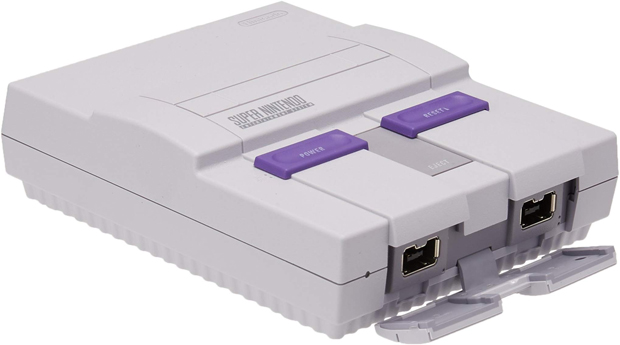
As mentioned before, there are less games on the SNES Classic Edition, which does some tricky things with the perceived value. Yes, it has many of the heavy hitters: Super Mario World, Super Metroid, Star Fox, Donkey Kong Country, Legend of Zelda: A Link To the Past, and the original Mario Kart. A few unique surprises are included, notably the innovative Super Mario RPG and Secret of Mana, but the biggest one comes in the appearance of the previous unreleased Star Fox 2: a sequel stalled by rights and emulation issues across several platforms. That in itself carries some extra worth for the SNES Classic Edition, as it’s currently unavailable to be played elsewhere. Whether that offsets the absence of other titles will be up to the owner, but some have critiqued the lack of noteworthy favorites (no Double Dragon, TMNT: Turtles in Time, or Zombies Ate My Neighbors) and comprehensiveness (missing several Donkey Kong and Mario titles) of the included games that could’ve been avoided had they also gone with a 30-game lineup.
The options mentioned above regarding the NES Classic Edition also apply to the SNES Classic Edition. This console also receives the trio of Display Mode options, either giving the image retro scan lines akin to old-school televisions or presenting them in “prefect pixel” mode that squares everything off, as well as the foursome of Suspend Point slots. Some new functions have been included with this console, though, including a Rewind feature that allows the player to zip back in time about a minute from a suspend point to perfect their run (or undo a mistake), as well as the ability to replay suspend points as the pre-recorded “demos” in games and the ability to choose different borders around the 4:3 games. Plus … it delivers two controllers out of the box, so those Street Fighter combat sessions can be enjoyed immediately after plugging everything in. While it may lack in certain areas and seem weaker against the NES Classic, what the SNES Classic Edition does accomplish still easily justifies the $80 price tag.
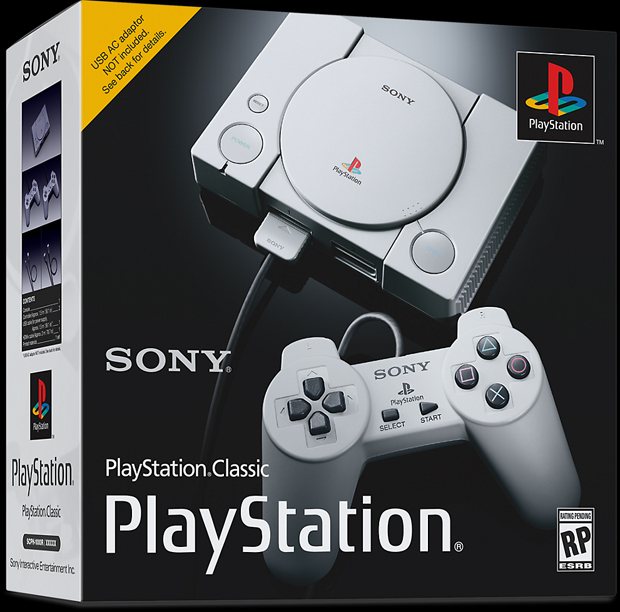
Sony PlayStation – PlayStation Classic
Number of Games: 20 | Scarcity: Unknown, But Desires Have Weakened | MSRP: $99
Then came the response: “Well, if Nintendo can make it work, we should be able to as well, right?” Slated for release before Christmas, Sony will be offering their own mini-console, the PlayStation Classic. Priced at $99, it’s understandably more expensive than its counterparts, given the increased fidelity of the games themselves. Like those that came before it, Sony’s first stab at a mini-console shares plenty of similarities to the others, sporting an HDMI port on the back and a mini-USB port for ease of plugging into another USB lack or a wall outlet. There are a few mysteries at this point, though: reports indicate that a “power cord” hasn’t been included, and since the micro-USB cable can be seen with the system, that means the absence of a wall adapter for the USB cable. The controllers also don’t have thumbsticks, only standard buttons and triggers. Those are things that make you go: “Hmmm…”
After Sony unveiled the games includes on the PS Classic, and plenty of folks had engaged in some deduction, the reason for the absence of those thumbsticks became clear: none of the games included on the system needs them, by requirement or as a quality-of-life improvement. Both youngster-friendly and M-rated games have been included on the machine – Metal Gear Solid and Resident Evil: The Director’s Cut showed up for the party – and some heavy-hitters attempt to justify the entry price, such as the almost-required Final Fantasy VII and the tough-to-find Revelations: Persona. The rest leave one feeling like the PS Classic might’ve been a major missed opportunity, since there’s no Silent Hill, Jet Moto, Ape Escape, Crash, Spyro, WipeOut, Tomb Raider … or, most importantly, no GEX (just kidding). Some truly iconic, nostalgic stuff can’t be found on the PS Classic, either for functional reasons or business decisions (remasters, remakes, etc.), and it’s a bummer in comparison to what the Nintendo systems have offered.
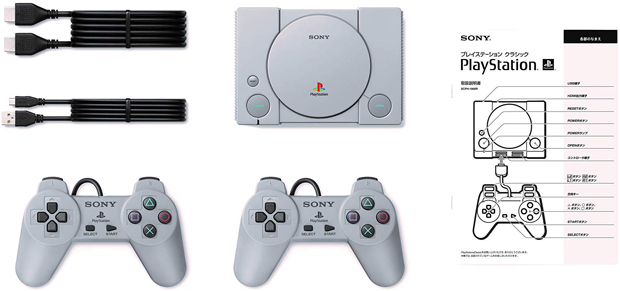
That being said, Sony seems intent on capturing a specific tone with the release of the PS Classic: to present the original, unedited system as it arrived on the scene in the mid-‘90s. The way their branding has played out thus far with the retro system leads one to wonder whether they plan on a second console to eventually get released, one that represents the newer model of PlayStation that did come with thumbsticks and one that might come preloaded with those superior sequels and missing gems. Maybe after they’ve got a year of distance away from recent remastered collections and current franchise releases, we’ll see some of those who were absent. If that relies on how well this initial collection sells, which will set gamers back $100, who knows whether that’ll happen. Despite containing “20 of the best games from the original PlayStation console”, some things are missing in both form and function with Sony’s first tapping into this retro console craze.

Third-Party Flashback Consoles – Sega Genesis and Atari
Number of Games: 80-120 | Scarcity: Always Available | MSRP: $75-120
Once you venture beyond the official console releases from the companies themselves, you’re entering something of a gaming Wild West, full of vague licensing and entirely sporadic quality. Oftentimes, the number of games loaded up on these machines is impressive, between 80 to 100, and the marketing on the packages leads one to believe that they’re going to get 80-100 classic games for whatever console is being emulated. Thing is, sometimes those units contain filler representations of simple games, from chess to memory tests and whack-a-mole style of games, and while they’re usually printed as such on the back of the package, it’s still somewhat deceptively presented on the front. Typically, about half – sometimes more, oftentimes less – of the games on those are actually, say, SEGA or Atari or ColecoVision titles.
Then there’s the functionality of the systems themselves, and despite the fact that almost all of ’em now are easily plugged-and-played in “HD” via HDMI, they are best described as unreliable. Some attempt to bite off more than they can chew, such as certain version of a SEGA Classic system boasting that they can load up the classic cartridges when they’re plugged into the familiar slot. In theory, whether it’s through included ports or updates via USB, these machines should function; in practice, either graphically or mechanically, running and playing most of the games themselves lead them into problems. Some have controllers buttons and power switches made of inexpensive materials that have trouble working after extended gameplay; some of the portable ones deal with glitchy screens out of the box. When it comes to the flow of the games themselves, the playback issues can range from unresponsive lag to some really wonky audio, framerate clumsiness, and outright glitchiness.
Typically, these systems cost about $75 – maybe $50 or so on sale – which take them a step or two down from coughing up the money to buy a regular videogame system and downloading/eBaying a compilation. If someone wants to enjoy, for example, the SEGA games included in one of these compilations, there are alternatives: one can pick up a 2DS bundle (check out Ben’s Bargains Hardware Guide) and purchase the Sonic Classic Collection as a far more versatile package for a grand total of about $100; or, if they have a PS4 already, they can buy the Sega Genesis Classics collection for about $30. That logic may also apply to the Nintendo and PlayStation titles covered in their company’s retro systems, but the great thing about those direct releases is that the reliability and effortlessness of their all-in-one packages makes one not interested in pursuing alternatives.




